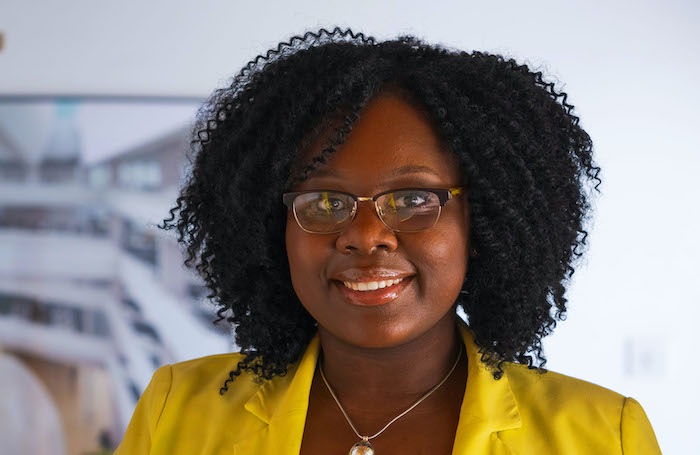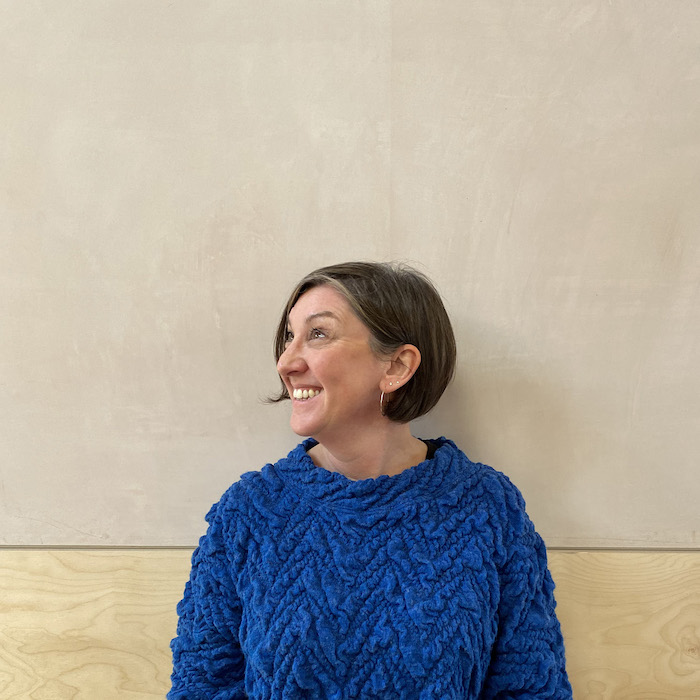For the vast majority of new students, architectural studies will introduce them to studio culture, which still remains the stand-out experience for many to this day.
Natalie Matanda, architect at Cambridge and Brighton-based RH Partnership, says that her first year was her introduction to collaborating with like-minded people working together as a team, with the benefits of bouncing ideas off each other being greatly encouraged by tutors.
“Most of my times were spent in the studios as there was such a great studio environment. To this day, my studio experience in my first year was without a doubt, the best experience from my entire architectural journey,” she says nine years later.
Similarly, Lynsey Elliott, who studied at Glasgow’s Mackintosh School and is now Director at award-winning Elliott Architects in Hexham, says that learning in the studio was key to getting through the first academic year.
“The studio culture in architecture is a very special thing - it encourages work ethic, exposes you to more ways of thinking and doing, and develops your personal skills that are so important in professional life.
The studio space is such a rich learning environment, just like it is in a good design-led practice, so it sets the tone for your career and is often where you find your lifelong friends.”

What did being on the architectural rollercoaster feel like?
David Adjei, who founded London-based Cognition Architecture while still studying for his Masters degree, recalls a time of rOtring pens, expensive pencils and tracing paper… and several light-bulb moments.
“I remember wrapping my head around how stuff is built and realising the incredible power of a single line on a drawing – let's just say it was like discovering the hidden tricks of a really cool puzzle,” he recounts.
These ‘wow’ moments were shared by his friends and fellow students.
“What got me through it all was a combination of prayers, coffee, and teaming up with fellow students on the same rollercoaster,” he continues. “We were like an idea-sharing think tank, dissecting each other's projects and lending a helping hand. Turns out, a mix of divine intervention, liquid energy, and a dash of collaborative brilliance was the ultimate recipe for conquering that academic mountain.”
Read more in the RIBA book Designing for the Climate Emergency: A Guide for Architecture Students
Architectural studies also stand out for the variety of experiences on offer. Natalie says from the outset her course allowed her to experience photography, site visits, working on live projects, and the designing of both fictional and non-fictional projects and sites.
There was collaboration with other industries and even working with the latest digital 3D modelling software.
Most architects would admit that both architectural education and practice can be tough environments to navigate successfully and that a thick skin can be useful when facing criticism.
“I would tell my younger self to have more confidence,” Natalie says.
“By staying strong and confident in what you design, and expressing this to whoever you present your ideas to, you can surprise yourself and realise that there is nothing to be scared of. The biggest surprise throughout my architectural education experience is that no matter how tough it was, I got through it all because of self-belief and knowing deep within my heart that I wanted to reach that goal of becoming an architect.”

Would a tighter bond between academia and practice be beneficial?
There is an ongoing debate about whether architectural studies should be more vocational, and course structures are set to be reformed in the near future.
“Universities are wonderful places and generally nurture good design and experimentation, but the nature of academic institutions is at odds with the pragmatics of architectural practice, and although you learn fast once you begin work, more preparation would help ease that transition,” Lynsey argues.
“I benefitted from being exposed to tutors who were practicing architects, but I know this approach has significantly diminished over time. I would like to see more design and professionally qualified architects teaching.”
Read more on how architects can be better practice mentors.
David agrees: “Wearing my hats as both a part time lecturer and a practice owner, I strongly advocate for a tighter bond between academia and practice".
“Reflecting on my course and overall journey, one thing I wished for was more internships and practical interaction. Having hands-on experiences and direct exposure to the field would have been a game changer. It’s like adding a practical seasoning to the theoretical foundation, making you better prepared for life beyond Part 1 studies."

What would David and Lynsey tell their younger selves?
As for what David says about what he would tell his younger self, he says: “Dive headfirst into your local architecture community and weave a web of informal connections".
“Believe me, this simple move can be a total game changer. It's like unlocking a treasure trove of opportunities and initiatives waiting to be explored. Getting cosy with those who are a step ahead of you can be an incredible source of learning and growth.”
Read more about Future Architects - RIBA's community for new and young architects.
As for Lynsey, she says she would tell her younger self to work in the studio, be self aware, trust your judgement and listen.
“Professional life can be tough and so there is a danger that architectural graduates may find the transition into practice more difficult,” she says.
“Either way, you need to listen to all of the advice and learning, then trust your judgement about the decisions you make. I would tell myself to remember that despite praise, the work could be better, and that despite criticism, the work may be very good; ultimately you need to be aware of your own limitations and abilities.”
Thanks to Natalie Matanda, Architect, RH Partnership; David Adjei, Founder, Cognition; Lynsey Elliott, Director, Elliott Architects.
Text by Neal Morris. This is a Professional Feature edited by the RIBA Practice team. Send us your feedback and ideas.
RIBA Core Curriculum topic: Design, construction and technology.
As part of the flexible RIBA CPD programme, professional features count as microlearning. See further information on the updated RIBA CPD core curriculum and on fulfilling your CPD requirements as a RIBA Chartered Member.









